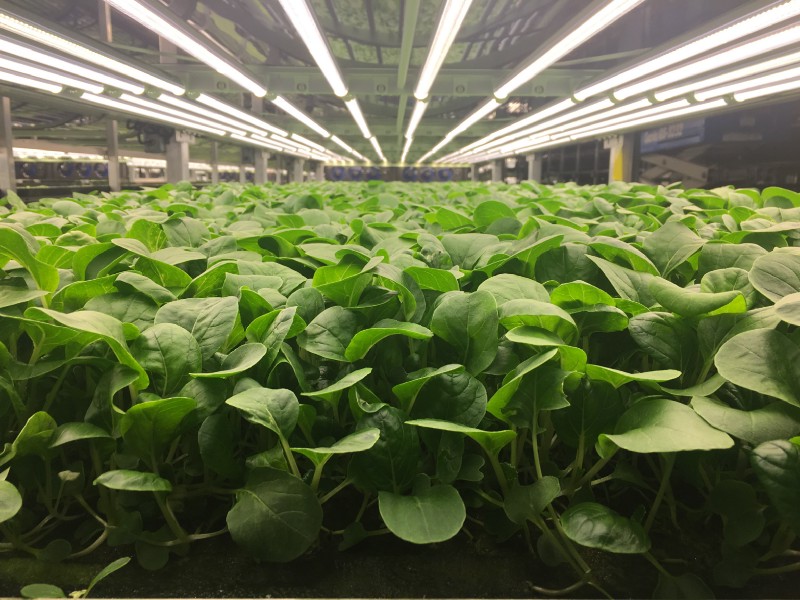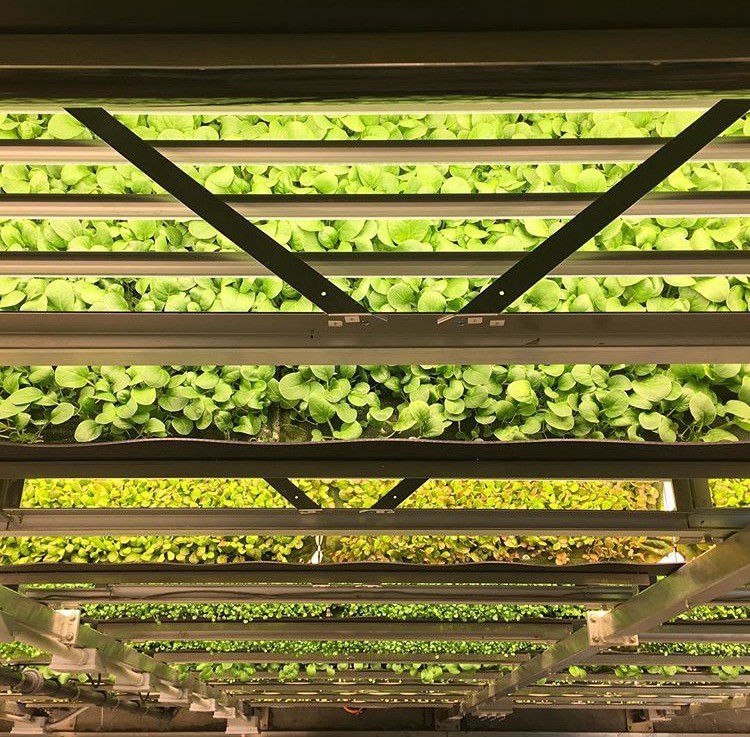
The planet deserves our love and gratitude every day. Earth Day falls in April and we’re spending the entire month focusing on how we can better connect with Mother Earth.
Today we speak with Alina Zolotareva, a registered dietitian who’s also working to rescue agriculture at vertical farming company, AeroFarms, who grow the produce for Dream Greens.
Splendid Spoon: Hey Alina! Tell us a little bit about yourself and Dream Greens.
Alina: I’m the marketing manager and registered dietitian nutritionist for Dream Greens. I love helping people eat more healthily!
At AeroFarms we grow leafy greens in sustainable vertical farms for Dream Greens. Farming this way uses less water than field farming, and enables us to grow in urban spaces! Dream Greens has the most delicious, nutrient dense baby greens.
SS: Tell us more about vertical farming.
AZ: Vertical Farming is a technique where we grow plants in trays stacked on top of each other. At our farm here in New Jersey, we have 12 layers of trays, which are 36 feet high. We grow inside, without sun or soil. The plants grow in cloth made from recycled water bottles. The roots grow below the cloth, and the leaves grow above. The roots are misted with water and nutrients, which allows us to use 95% less water than traditional field farming [95%?! What an incredible difference! — Ed.] . The leaves receive the exact spectrum of light they need from customized LED lights. This means they are perfectly clean and don’t need to be washed — they are never sprayed with anything, and aren’t grown in soil!
Vertical farming enables us to grow nutritious leafy greens in vacant warehouses, using very little land and water, and without degrading the soil or contributing to runoff.

SS: Why is vertical farming better than traditional farming?
AZ: The environmental impact of large-scale traditional farming is pretty severe. Research shows that popular pesticides are now being found in tap water. Our soil is degraded, which makes our food less nutritious. Plus, volatile weather makes water management difficult for farmers. Transforming the way we farm helps alleviate the pressure that agriculture puts on our natural resources.
Americans are now eating more leafy greens. This is obviously good, but it’s getting harder and harder for farms in California and Arizona to grow enough greens which are safe to eat. Vertical farming mitigates both these issues.
SS: How do you want people to change their approach to the planet?
AZ: I wish everyone would focus on being a conscious consumer. Every product we use and everything we eat has an environmental footprint. We’re busy and it’s easy to purchase based on convenience. However, researching what ingredients are tough on the environment, what packaging is easiest to recycle, and which vegetables are sprayed with the most pesticides can go a long way. Cooking more plant-based meals would be another amazing step [Obviously this is our favorite, easy way to help heal the planet too! — Ed.].
SS: What’s your favorite green and why?
AZ: This is a tough one! They all have such special flavors and characteristics! If I had to choose, I’d say baby watercress. It’s packed full of vitamins C and K, and is one of the most nutrient dense foods on the planet. It has a refreshing flavor and a gentle crunch. I eat it as an afternoon snack (the new popcorn!) and put it on almost everything I eat [We’ll be turning to watercress for our next office snack! — Ed.]!
SS: What are the key health benefits of leafy greens?
AZ: Leafy greens are the perfect food: rich in a long list of essential vitamins and nutrients (such as vitamins A, C, E, K, folate, and fiber), low in calories, carbohydrates, cholesterol and sodium, and free of saturated fats and sugars.
SS: What’s your favorite way to eat your greens (apart from salad!)?
AZ: I put greens in almost everything to boost flavor and nutritional content. Baby kale goes in smoothies, baby arugula in soups, pasta, burgers, and sandwiches… I garnish my dishes with fresh greens as well. Our website has some super creative recipes like greens salsa and greens burgers too!
SS: How can we learn to appreciate the difference between all these leafy greens?
AZ: An at-home greens tasting is a great way to practice mindful eating and appreciate the unique flavors and textures of each green. Set aside time to enjoy your greens, away from any distractions. Sit in a well-lit, comfortable area where you can fully pay attention to your meal. Start with a mixed selection of leaves. Lay out each leaf in front of you. Appreciate the different appearance of each leaf. Try each different leaf individually. Take a small sip of water between each one. Chew slowly. Pause in between each taste so you can sense how different flavors linger even after you’ve swallowed the greens. Once you’ve sampled the individual leaves, take a small handful of the blend and see how the mix comes together on your palette. Do this without any dressing, oil or vinegar so you fully appreciate the unadulterated greens.
